Hinduism

Hinduism is properly called sanatana dharma, which means “eternal religion” or “eternal truth” in the Sanskrit language. It is a diverse religion with many local practices, forms of worship, and traditions. The main forms of Hinduism still practiced today developed about 2000 years ago, but these formed from the older Vedic religion. Many Hindu practitioners consider their religion to have existed for as long humans have been alive to worship.
Hinduism contains a wide range of devotional practices. It has been described as a pantheistic or polytheistic religion because of the many deities or divine manifestations that are acknowledged. However, Hindus also believe in a supreme being. Worship may be directed to this supreme being or to a number of other minor gods or spiritual entities. Some common features of Hindu belief include the concepts of reincarnation, karma, and sacrifice. Adherents attempt to achieve dharma, or a righteous way of living.
There are many sacred texts associated with Hinduism, in part due to the diversity of the religion. However, special importance is placed on the Vedas, written in the ancient Sanskrit language. The Upanishads, sutras, and Bhagavad Gita are also important texts.
Many Hindu rituals take place at home or in outdoor locations. Devotees may also visit temples consecrated to a specific god. Temple priests have historically come from the Brahmin caste, the highest level in the traditional Hindu caste system. Other spiritual leaders are gurus, who establish followings of students based on their own teachings and interpretations.
Denominations
Vaishnava – Though all Hindu sects affirm the existence of a supreme being, denominations differ in how that being is identified. Vaishnava Hindus worship Vishnu, who takes various forms but is commonly depicted with blue skin and four arms.
Shaiva – This sect venerates Shiva as the supreme being. Though all sects have a great variety of practices within them, Shaivism is known for its asceticism.
Shakta – Shaktism emphasizes the central importance of feminine energy. This energy can take the form of many different gods, each with its own specific form of worship.
Smarta – Unlike the other devotional sects, Smartism does not identify any single deity as supreme. Instead, devotees worship an array of gods that are all believed to be manifestations of the same divinity. Smarta practices tend to be less ritualized and more personal and introspective.
Color
Colors are used to represent beliefs, traditions, and concepts in many religious traditions. Many Hindu deities are depicted in yellow clothing to represent their wisdom and yellow is used by devotees to symbolize knowledge and learning. Yellow is also closely associated with the spring season. Hindus may wear yellow clothes and eat yellow foods at religious festivals during the spring.
White was chosen as the exhibit’s background color because it is meaningful to each of the five religions. In Hinduism, white symbolizes cleanliness, peace, and knowledge. Saraswati, the goddess of music, art, and learning, is always shown wearing a white dress, sitting on a white lotus. Hindu religious leaders cover themselves with white ashes to represent their spiritual rebirth.
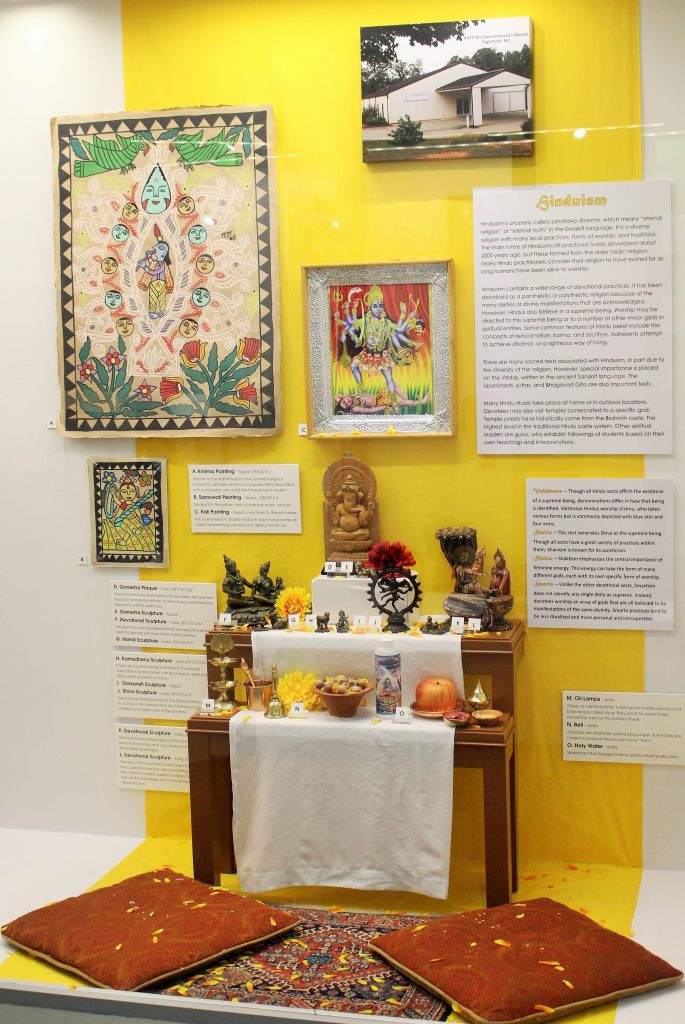
Learn about the featured objects below
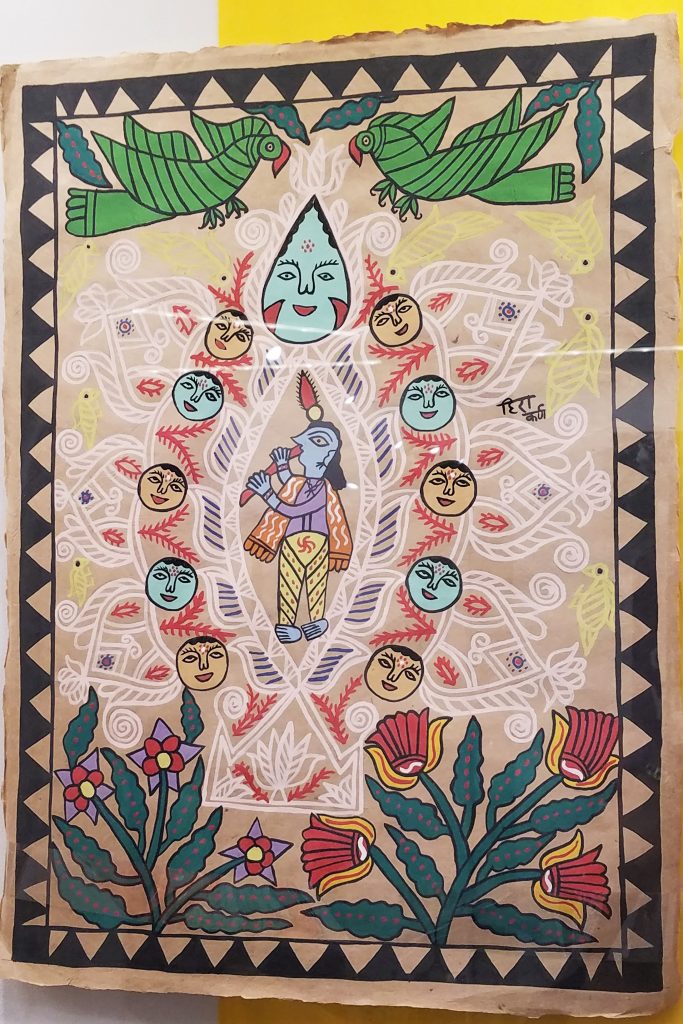
A. Krishna Painting
Nepal
1996.07.E.1
Women in the Maithili region have painted religious scenes for centuries. Krishna is a popular deity associated with compassion and child-like transcendent wisdom.
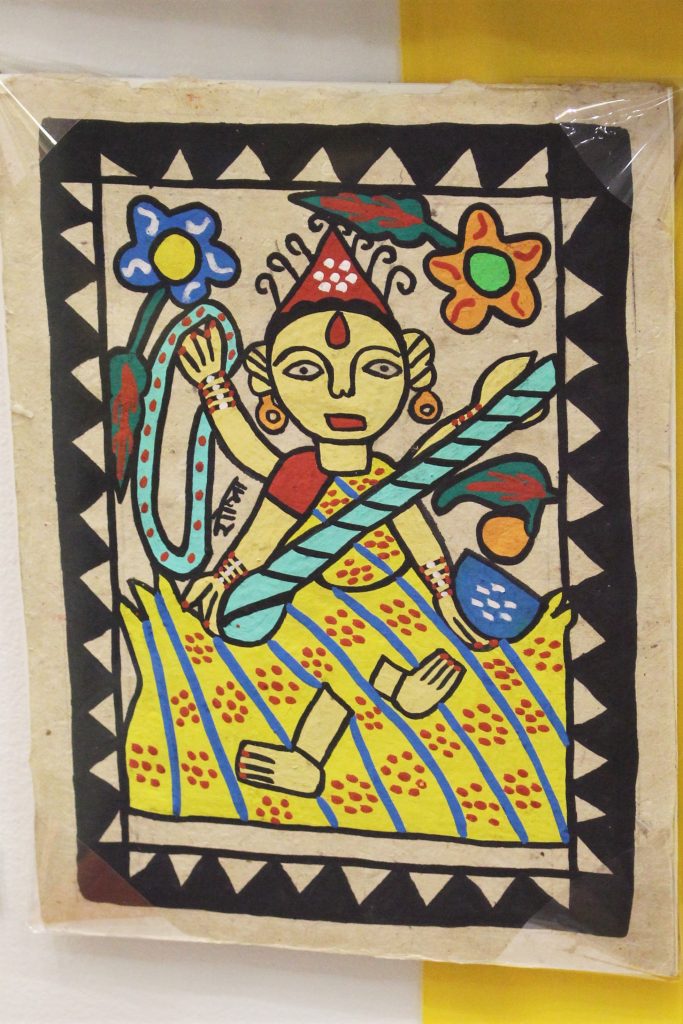
B. Saraswati Painting
Nepal
1996.07.E.4
Saraswati is the patron deity of learning, music, and art.
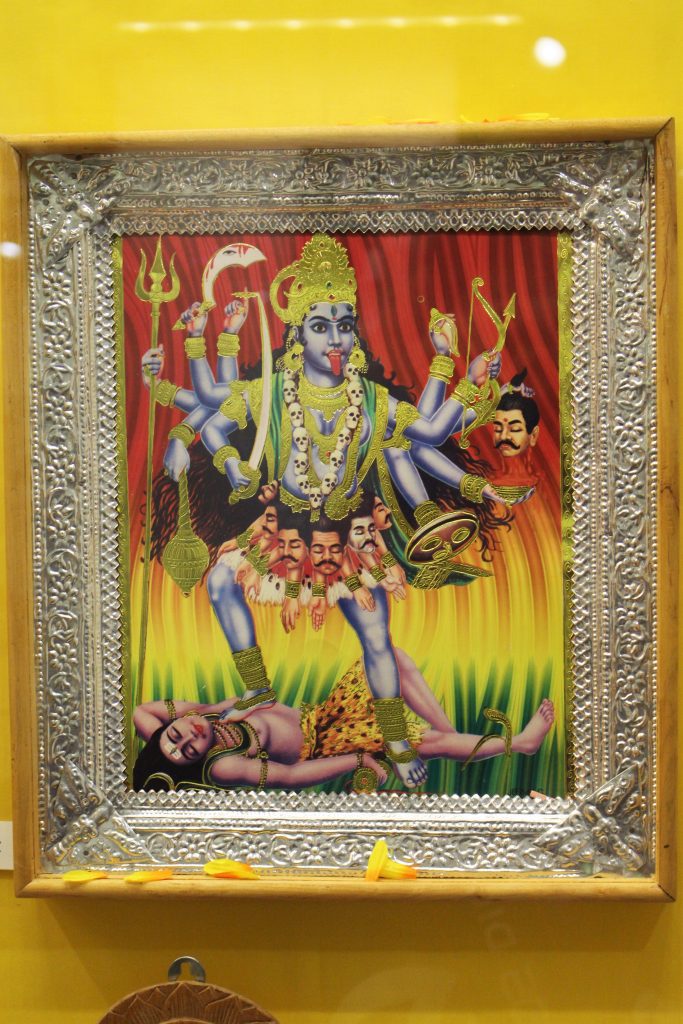
C. Kali Painting
Nepal
Loan from Dr. Steven Folmar
Kali is venerated in Shakta Hinduism. Each hand carries an object representing creative and destructive forces.
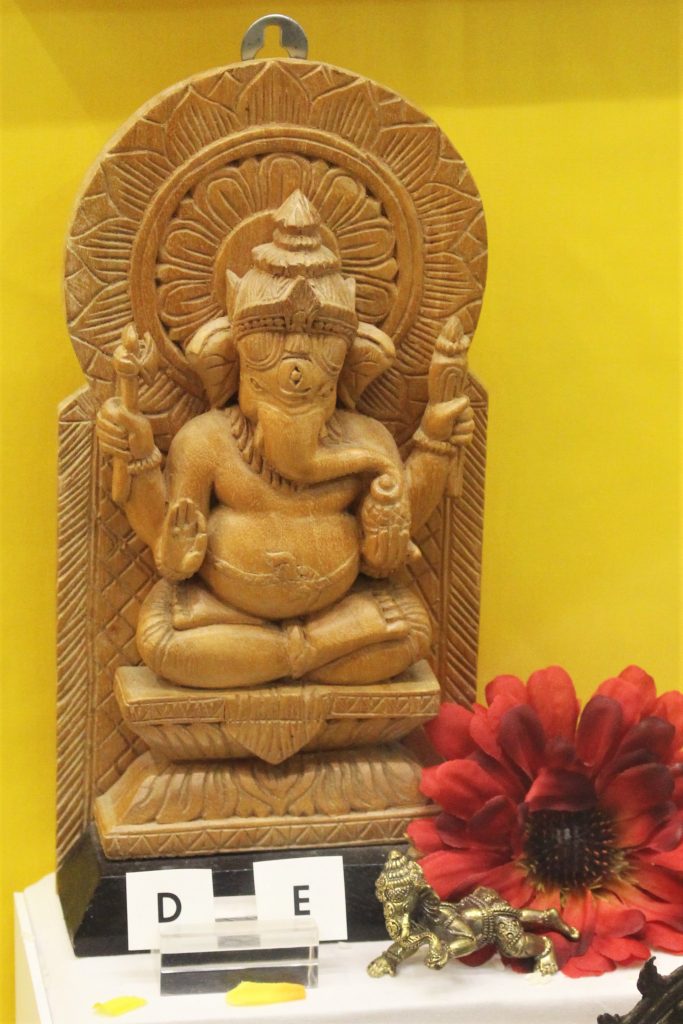
D. Ganesha Plaque
India
2017.07.E.42
Ganesha removes obstacles for his devotees. His elephant head symbolizes the Atman, or eternal soul, while his body represents earthly existence.
E. Ganesha Sculpture
Nepal
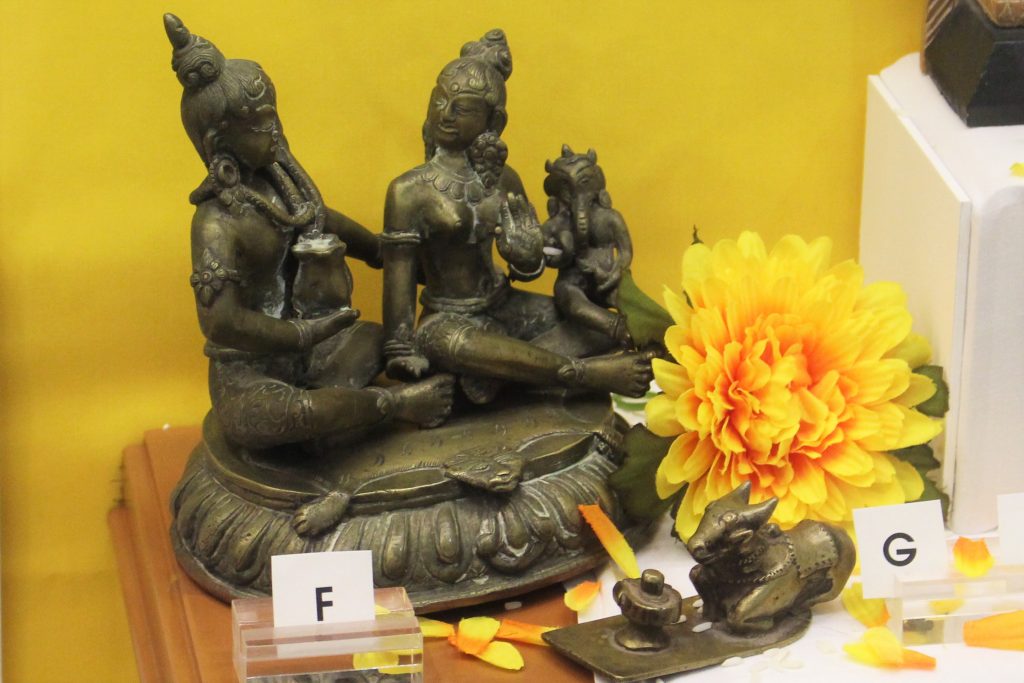
F. Devotional Sculpture
India
2017.07.E.33
The god Shiva and the goddess Parvati are depicted as the ideal household with their infant child Ganesha.
G. Nandi Sculpture
India
2017.07.E.29
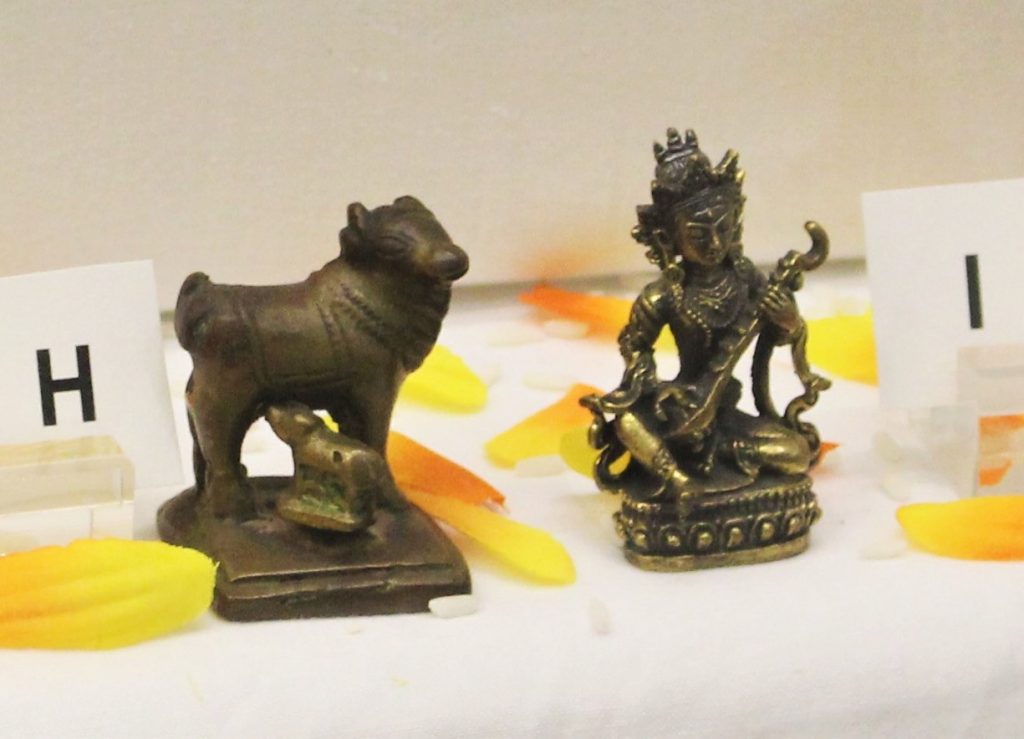
H. Kamadhenu Sculpture
India
2017.07.E.31
Cows are sacred animals in Hinduism. The female Kamadhenu is associated with abundance, while the bull Nandi is the guardian of Shiva.
I. Saraswati Sculpture
Nepal
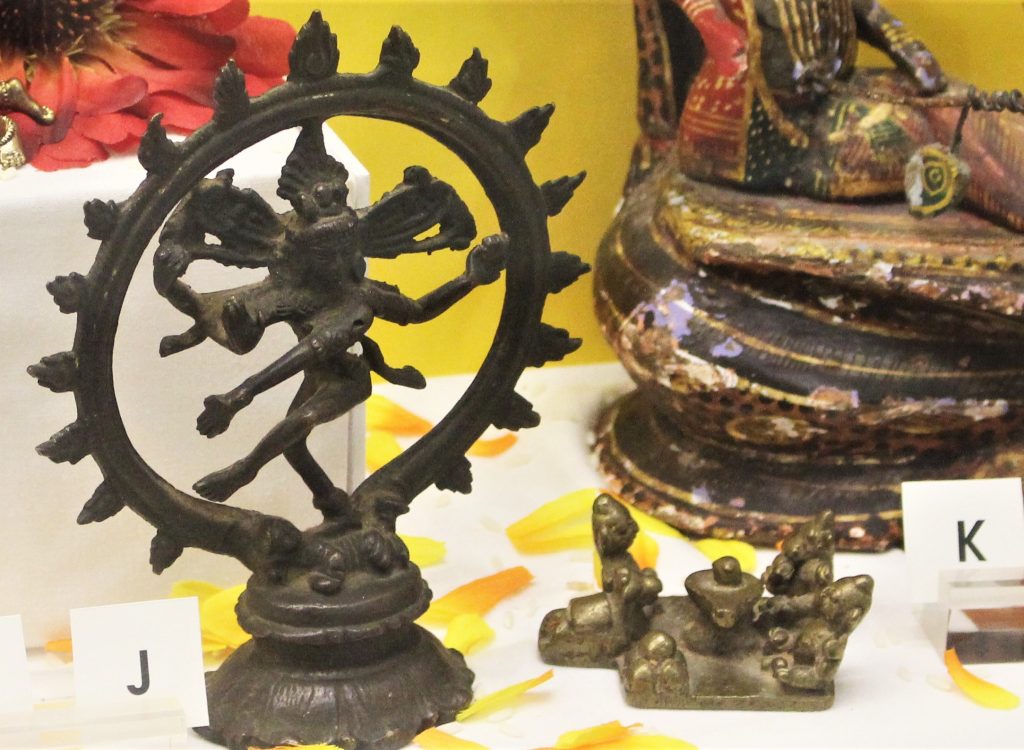
J. Shiva Sculpture
India
2017.07.E.27
Depicted as Nataraja (Lord of the Dance), Shiva dances in a circle of fire representing the continuous cycle of creation and destruction of the universe.
K. Devotional Sculpture
India
2017.07.E.32
This miniature sculpture depicts Shiva devotees surrounding a linga and yoni, symbols of the Devi and Shakti spiritual energies.
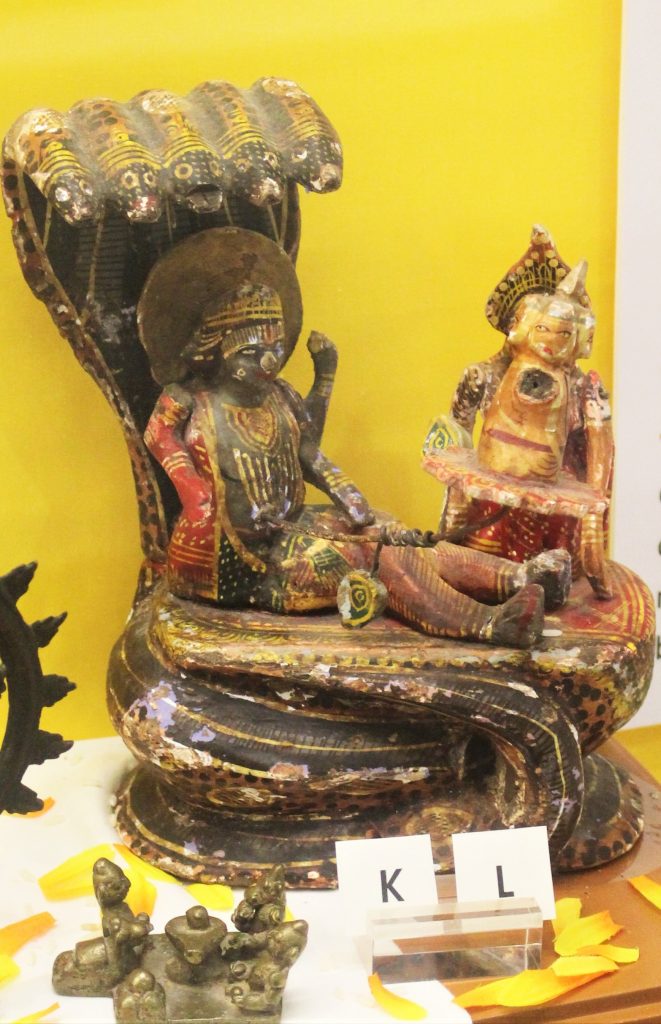
L. Devotional Sculpture
India
2017.07.E.34
The deity Vishnu reclines on a throne made of serpents in this sculpted scene from the Bhagavata Purana text. Vishnu’s consort, Lakshmi, washes his feet while the deity Brahma emerges from a lotus flower growing out of Vishnu’s navel.
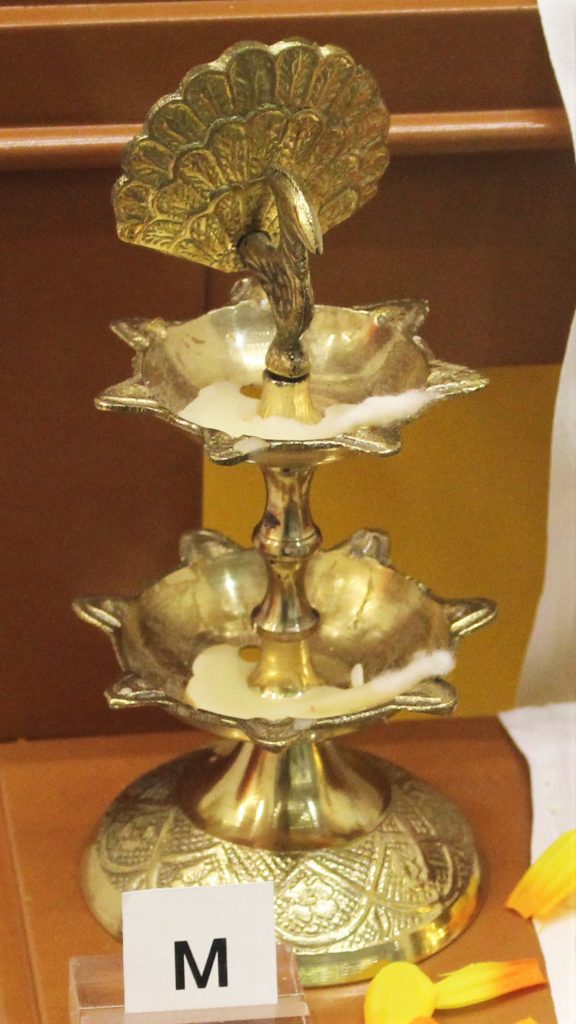
M. Oil Lamp
India
Ghee, or clarified butter, is the fuel for traditional clay and brass lamps called diyas. They are lit for ceremonial occasions, such as the holiday Diwali.

N. Bell
India
Ghantas are ritual bells used during prayer. Some bells are made to produce the sacred sound “Aum.”
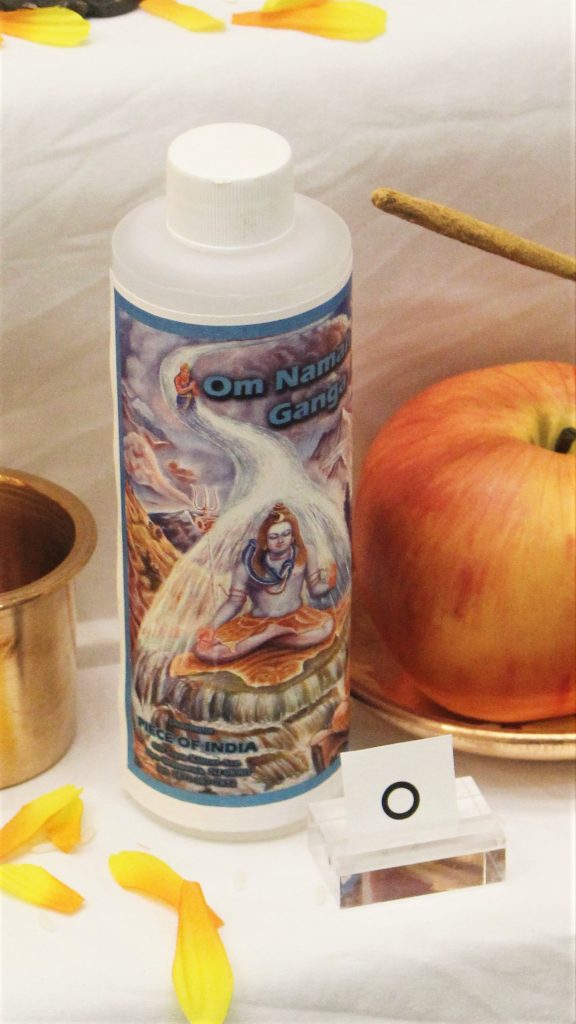
O. Holy Water
India
Water from the Ganges River is used for ritual purification.
